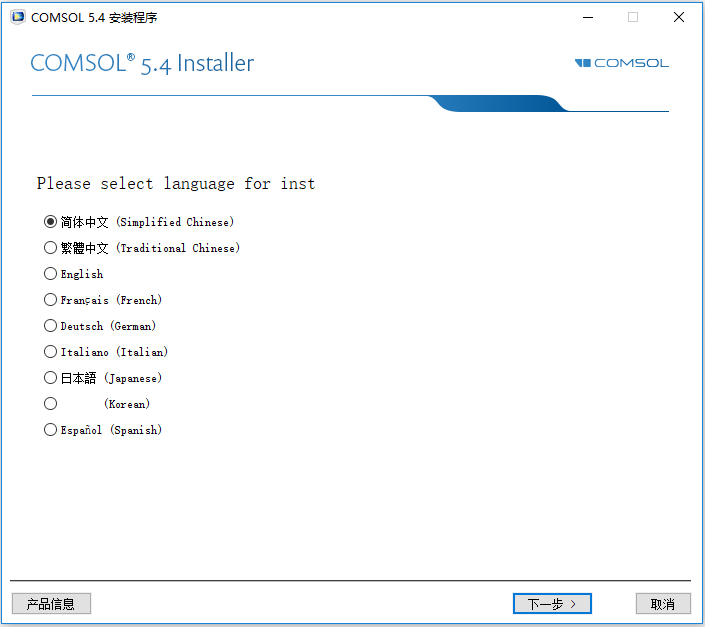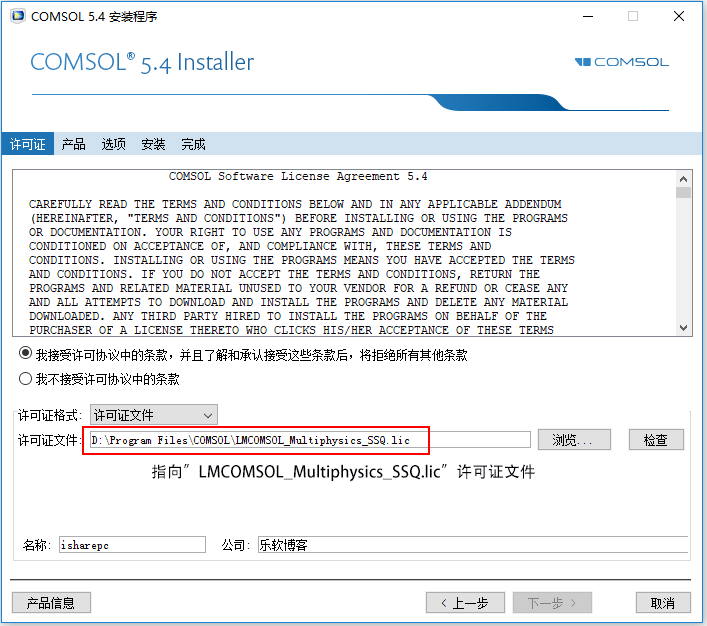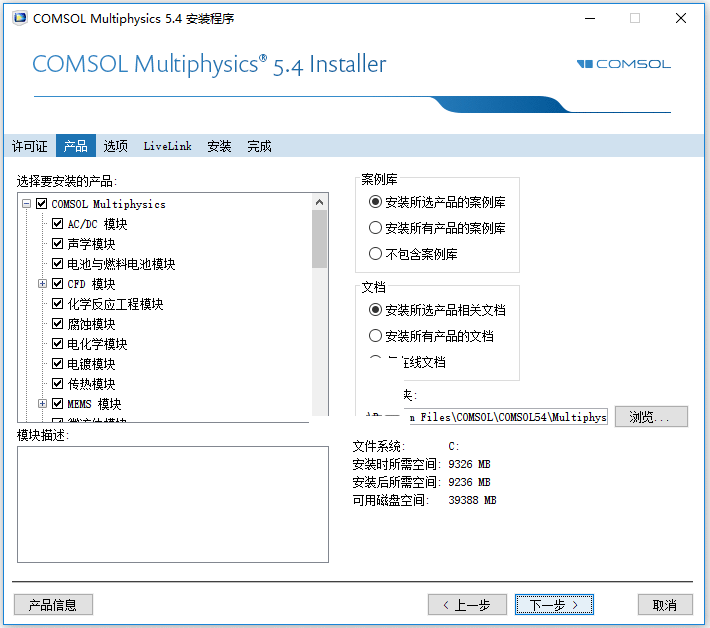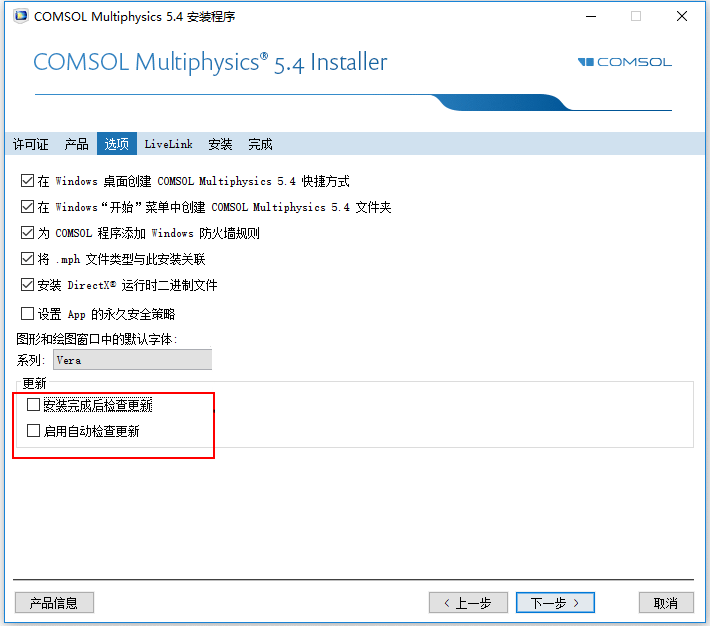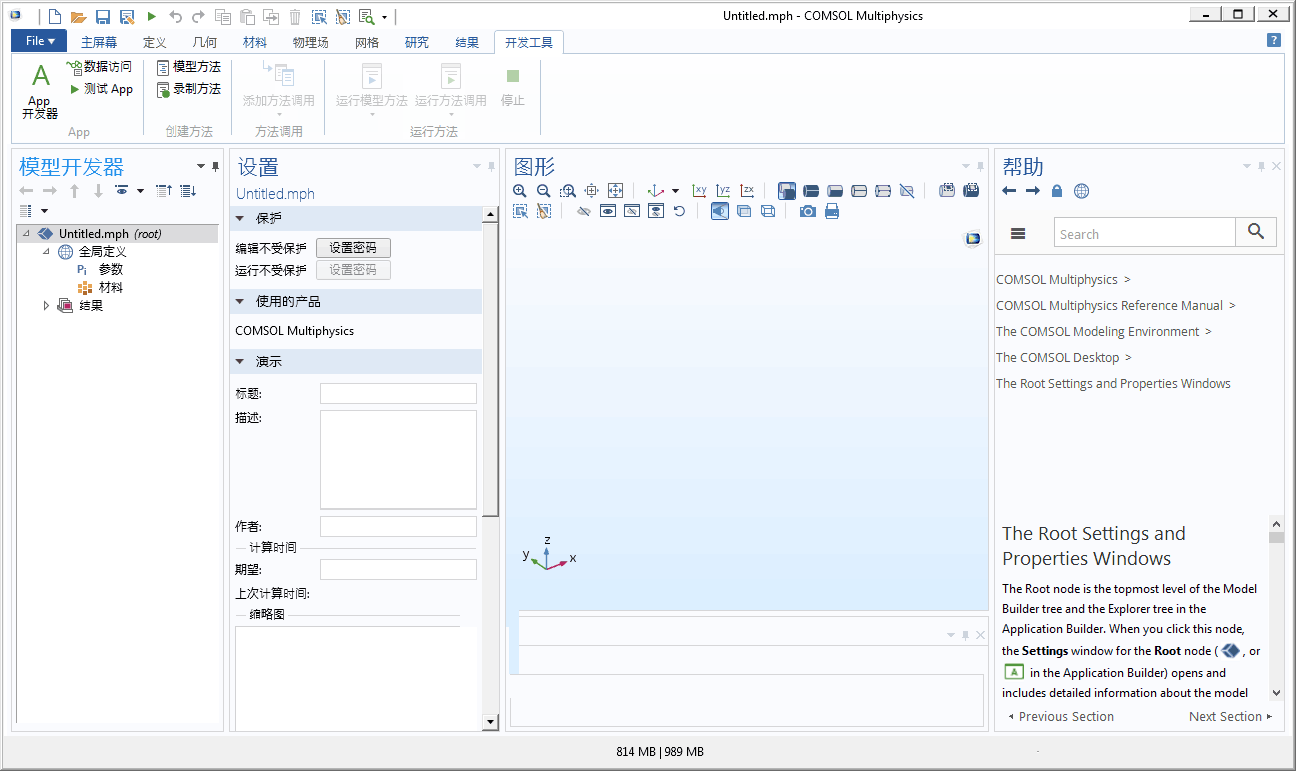教程导航 / Navigation
|
 自动化仿真软件软件排名之COMSOL Multiphysics 5.5.0.292破解版
价 格:¥ 30.00
30天售出:16 件
[ 下载地址1 ] [VIP及以上会员专用下载地址,普通会员和游客请直接点击购买按钮]
商品详情
COMSOL Multiphysics 5.5中文授权版是一款功能强大的基于物理场,借助数值仿真理解、预测和优化工程设计软件,可用于建模和模拟任何基于物理的系统的软件环境,是全球通用的基于高级数值方法和模拟物理场问题的通用软件。 使用旨在为用户提供完善的多物理场仿真建模功能,也可以将模型封装为仿真 App ,提供给设计、制造、实验测试以及其他合作团队使用。功能非常的齐全,借助于软件,你可以轻松对真实世界的产品和过程进行优化,快速进行适合众多工程领域的建模操作,并且为用户提供精确的多物理场建模结果,软件拥有统一的建模工作流程,支持几何建模与 CAD,基于物理场建模和基于方程建模,除此之外,还拥有、网格划分、研究和优化、求解器、可视化和后处理、仿真 App等相关功能,轻松实现各个环节的流畅进行,它能够解释耦合或多物理现象。 附加产品扩展了电气,机械,流体流动和化学应用的仿真平台。 接口工具使COMSOL Multiphysics仿真与CAE市场上的所有主要技术计算和CAD工具相集成。 PS:本次为大家带来了最新版COMSOL Multiphysics 5.5中文授权版下载地址,包含有效许可证文件+安装教程,欢迎有需要此款工具的朋友前来下载使用。 支持Windows、Linux系统。 官方介绍COMSOLMultiphysics®是一种通用软件平台,基于先进的数值方法,用于建模和模拟基于物理的问题。使用COMSOL Multiphysics,您将能够解释耦合或多物理现象。有超过30种附加产品可供选择,您可以使用专用物理接口和工具进一步扩展仿真平台,用于电气,机械,流体流动和化学应用。其他接口产品将您的COMSOL Multiphysics仿真与技术计算,CAD和ECAD软件连接起来。 使用COMSOL Multiphysics,您可以轻松地将一种物理类型的传统模型扩展为多物理场模型,同时解决耦合物理现象。更重要的是,获得这种力量并不需要深入了解数学或数值分析。 Comsol Multiphysics 5.5破解安装教程参考Comsol5.4版本 1,加载COMSOL.5.4.0.225_DVD.iso镜像文件,双击Setup,选择安装语言简体中文
选择新安装COMOL 5.4
2,在许可证界面,许可证格式选择”许可证文件”,指向LMCOMSOL_Multiphysics_SSQ.lic许可证文件 (许可证文件你可以放在一个指定的文件夹,比如直接放在安装目录下)
3,选择你要安装的产品和安装目录,默认全部安装~~全部安装占用9326MB大小
在选项中,不要勾选”安装完成后检查更新”, “启动自动检查更新”
4,安装完成之后即可 PS:本破解来自SSQ破解团队,如果你要安装COMSOL Server,请参照内附SSQ破解说明自行研究安装
SSQ破解说明 for Windows 1.将COMSOL DVD安装到虚拟DVD驱动器中,并使用setup.exe开始安装 2.选择“ _SolidSQUAD_ \ LMCOMSOL_Multiphysics_SSQ.lic”以安装COMSOL Multiphysics 3.选择组件,安装文件夹和选项。 4.(可选)如果要安装COMSOL Server,请取消选中“创建管理用户”和TICK 4.1以管理员身份从“ server_install_workaround”运行“ COMSOL_Server_Workaround.bat” 4.2等待脚本完成 5.(可选)如果安装COMSOL Server,请在安装完成后打开 6.享受! COMSOL Multiphysics® 5.5 版本主要新增功能COMSOL Multiphysics® 5.5 版本新增了草图绘制工具,用于在二维平面和三维空间中的二维工作平面上绘制草图,在“设计模块”中添加了尺寸和约束功能,并引入了两个新模块。“金属加工模块”可用于模拟钢淬火等金属相转变,“多孔介质流模块”可用于模拟多孔介质中的质量、动量和能量传递。本页面汇总了 COMSOL® 软件 5.5 版本的主要新增功能,欢迎浏览左侧菜单,进一步了解新版本中与核心建模功能,以及特定专业模块相关的详细更新信息。 想要立即更新 COMSOL Multiphysics® 吗?请单击下载 5.5 版本 按钮,网页将自动跳转到产品下载页面。如果您已注册 COMSOL Access 帐户并将其与您的许可证相关联,您只需登录并遵循屏幕上的产品下载和安装说明,即可轻松下载最新版 COMSOL® 软件。 通用功能更新 新的草图绘制工具,支持您更轻松地创建二维草图 “设计模块”新增尺寸和约束功能,用于绘制草图 新增网格算法可自动选择安全的节点位置,以获得边界上的高阶单元 新增多个工具用于编辑增材制造、3D 打印和 3D 扫描格式 支持 PLY 和 3MF 导入导出 “图形”窗口中新增关联菜单,简化建模操作 用于选择框、取消选择框和缩放框的保持启用 选项 “图形”工具栏定制功能 集群计算的性能得到提升 支持在绘图中定制两种颜色之间的渐变 支持以点和箭头来动画演示流线 支持直接将图像导出至 PowerPoint® 创建您自己的插件来定制“模型开发器”工作流程 COMSOL Compiler™ 支持生成最节省空间的可独立运行的仿真 App 流体流动和传热 新产品: 多孔介质流模块 新产品: 金属加工模块 集总热系统等效模型 “参与介质中的辐射”新增多光谱带设置 非等温大涡模拟 (LES) 可压缩欧拉流 新增气泡流、Euler-Euler、水平集和相场等旋转机械多相流模型 黏弹性流体流动 支持任意数量的分散相 电磁学 压电和介电壳 新的洛伦兹力 特征 用于印刷电路板仿真的直接 TEM 和过孔型端口 混合模式 S 参数 新的比吸收率 (SAR) 计算特征 用于高斯光束的匹配和散射边界条件 倏逝高斯背景场 用于测定极化的周期性端口变量 全波与射线光学耦合分析 支持点列图自动计算 计算空间相关问题中的电子能量分布函数 (EEDF) 新增电晕放电 接口用于模拟静电除尘器 新增电击穿检测 接口,用于预测是否会发生电击穿 结构力学和声学 支持分析壳、复合材料和膜之间的机械接触 用于分析壳和复合材料的塑性及其他非线性材料模型 新的 管力学 接口 支持压电和介电壳与“AC/DC 模块”结合使用 随机振动分析 非等温流-固耦合 (FSI) 利用流-固耦合实现快速线弹性波分析 用于热黏性声学分析的端口 三维与一维管道声学耦合 用于复合壳的结构-声学相互作用 新增光滑映射功能,支持在气动声学中使用 CFD 结果 化工 从热力学数据库生成材料和 化学 接口 化学 接口中的电化学反应 管中电流分布 用于集总电池仿真的预定义 短路 特征 优化 内置形状优化工具 壳形状优化 基于拓扑优化结果的平滑几何模型 参数估计的置信区间 粒子追踪 流体流动颗粒跟踪 的内置力得到扩展,包括虚拟质量力和压力梯度力 某些粒子追踪模型的计算时间缩短 50% 以上 CAD 导入模块、设计模块和 CAD LiveLink™ 产品 关联几何导入功能 新增材料、层和颜色选择 新增 删除孔 特征去除操作 支持导出为 IGES 和 STEP 格式 Major News in COMSOL Multiphysics Version 5.5
免责申明: 本站仅提供学习的平台,所有资料均来自于网络,版权归原创者所有!本站不提供任何保证,并不承担任何法律责任,如果对您的版权或者利益造成损害,请提供相应的资质证明,我们将于3个工作日内予以删除。 |



